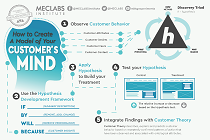May 08, 2008
How To
|
SUMMARY:
No summary available
|
|
A blog is, perhaps, the most common Web 2.0 tactic used by online content providers (and businesses in general) today. It’s also one of these easiest to get up and running.
Here are the steps involved:
Choose Your Provider
You have several options: TypePad, Blogger, Blogspot and WordPress are among the most popular. The good news: Many of them are free or low-cost. (TypePad, for instance, offers a free 14-day trial. Plans start at $4.95/month. But you can display your own advertising to help recoup those costs.)
For a simple blog, any of these providers would do just fine. If you want to add extras – or want more options for templates, widgets and other elements – do a little research and comparison shop to see which provider best meets your needs. Browse through some sample blogs on each provider’s site to get a feel for their available options and designs.
Note: Blogger is now a part of Google. So, Blogger users have access to the array of tools and widgets that Google offers.
Choose Your Design
After picking a provider, you need to figure out your design. Browse the templates offered by your blog host. You can usually customize the templates to some extent (this varies from one provider to another). Don’t worry – you aren’t “married” to this design. If you grow tired of one template, you can easily change to another later on.
Publish Your Posts
You enter your post either by typing directly into the text box or copying from your text editing program. And then hitting the “publish” button.
Technical Skills Not Necessary
If you’re using a blog site like Blogger, you don’t need advanced tech skills. The process is designed to be simple enough for the novice. The major blogging providers use a drag-and-drop system. It allows you easily place and move blog elements.
Control Your Access
Your control settings will allow you to decide who can contribute to and read your blog. Many publishers and other companies have blogs with several authors who take turns contributing postings.
Monitor Your Stats
It’s easy to monitor your traffic – most blogging services offer stat counters, or you can add one of your own.
Make Your Domain Easy to Remember
If you use a service such as Blogger to host your blog, the URL will probably be something like yourblog.blogger.com. But you can just register an easy-to-remember domain (like ourcompanyblog.com) and “point” it to your longer blog URL.
Check Your Settings
Depending on which service you use to create/host your blog, you may have the option of selecting whether to make your blog public and visible to search engines or keep it private and “invisible.” Generally, you want it to be public and easy for people to find.
Add Tools and Toys
There are lots of widgets, buttons and other fun elements you can add to your blog. Try a few things at a time, gauging visitors’ reactions and making adjustments as needed.
Among the most popular blog tools and widgets are:
• Detailed stat tools like the widget offered by Feedjit (feedjit.com) which records – and displays in real time - the arrival and departure time of each visitor to your blog.
• LineBuzz (linebuzz.com) is a tool that lets readers add inline comments to your blog.
• Communication tools such as 3Jam and Jaxtr, which let users contact you via your mobile phone while keeping your number private.
• Link monitors like WhoLinked, which keeps track of who has linked to your blog recently.
What Can You Do With It?
A blog is a good way to post news, opinions and other commentary. But you can do lots of other things on your blog besides posting basic text. Try adding podcasts, pictures, videos, photo albums or even maps. Photos are the easiest thing to add – usually, you just click a “photo” icon and then upload the image.
Tips:
Your blog should look like a blog. If your blog looks too formal or has a corporate feel, it will turn off visitors. Blogs are designed to look casual and loosely structured.
Use hotlinks liberally. Sprinkle your blog with links – both internal (pointing to other sites under your company umbrella) and external.
Tag each posting with search-friendly terms. After each posting, add as many relevant tags as possible. It will increase the likelihood that searches will lead to your blog.
Connect with other bloggers. A fast and easy way to get more traffic on your blog is to have other bloggers link to it. You can also leave comments on other blogs (complete with a link to your own blog).
Create an inventory of posts if you’re out of touch for a while. Services like Blogger offer scheduled publishing. You can “bank” a blog post (or several) and schedule them to go live at a future time.
On the Horizon
Later this year, Google will unveil a new blogging product called Google Weblogs. It will offer many cool features, such as the ability to post directly into Google search results.
Sample Publishing-Related Blogs:
Inky Circus – Science magazine for women, created by three female science journalists
http://www.inklingmagazine.com/inkycircus
On Deadline – Breaking news blog by USA Today
http://blogs.usatoday.com/ondeadline/
Risky Business – Journalists from The Hollywood Reporter contribute the daily updates to this blog about the film industry.
http://reporter.blogs.com/risky/
The Morning Paper – Covers news, entertainment, politics and other important world happenings
http://morningpaper.typepad.com/
Resources:
Videos of Blogger help tips
http://www.youtube.com/BloggerHelp
Sherpa article: How to Drive More Traffic to Your Blog on Weekends
http://www.marketingsherpa.com/article.php?ident=30339








